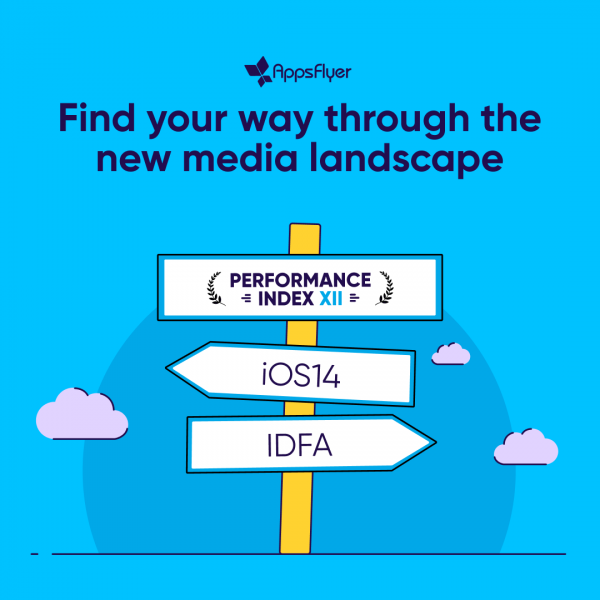
AppsFlyer, the global attribution leader, released the 12th edition of its Performance Index, ranking the top media sources in mobile advertising. In this edition, Google extended its lead over Facebook at the top of the Retention Index’s Universal Power Ranking, which orders media sources by their ability to drive loyal users at scale. SHAREit took the top spot as the fastest-growing media source in the Middle East, followed by Digital Turbine and Bigo. For the 12th edition, AppsFlyer analyzed 580 media sources, 29 billion installs, and over 16,000 apps.
Accelerated digital transformation coupled with growing awareness of user privacy sparked changes in consumer behaviour in the Middle East
20 per cent drop in iOS installs among the vast majority of media sources
While Apple’s ATT framework ― which includes privacy features that will restrict how mobile apps gather data about users ― won’t be enforced until “early spring”, AppsFlyer’s Performance Index shows it is already causing shifts in consumer behaviour. The share of non-organic installs (NOI) — installs that occur as a result of marketing activities — on iOS dropped 20 per cent in the second half of 2020, compared to the first half of the year. The decline was widespread, impacting the rankings of 17 of the top 20 media sources on iOS.
At the same time, the share of organic installs on iOS remained unchanged, as did the number of apps running campaigns on the platform. For comparison, Android’s NOI share showed the opposite trend, increasing by 6 per cent over the same period.
A 30 per cent jump in the cost per install (CPI) on iOS in H2 2020 was a key factor behind the significant drop (Android cost increased by only 10 per cent). As a result, mobile app marketers generated fewer installs for the same budget. The rise in media cost for iOS users was driven by two main elements: an increase in demand due to accelerated digital transformation caused by Covid-19, and a decrease in supply due to a 40 per cent rise in the share of users who enabled Limited Ad Tracking (LAT).

“The increase in end users enabling Limited Ad Tracking (LAT) is likely due to the growing attention around user privacy in general and Apple’s privacy changes in particular,” said Shani Rosenfelder, head of content and mobile insights, AppsFlyer. “Networks that rely on iOS were impacted across the board, as were the advertisers using them.”
“There are growing concerns around customers’ data privacy and this is perhaps best evidenced in the events surrounding WhatsApp’s changes to its Privacy Policy, and the imminent Apple IDFA update. Insight into customers’ behaviours and preferences will remain paramount to an organization’s ability to optimize their experiences. Brands must therefore ensure they engage with the right measurement partner that is capable of guiding them through this journey while complying with the highest standards of user privacy,” said Paul Wright, Managing Director UK, FR, ME & Turkey, AppsFlyer.
Google continues to grow on Android, Facebook’s quality across indices stands out
In the battle of the giants of mobile app marketing, Google extended its lead over Facebook on top of the Retention Index’s Universal Power Ranking. In the Middle East, Google also leads Facebook as the media source most likely to deliver users who monetize best with ads. Facebook took the top spot in the Remarketing Index in the region. The search giant’s share of the global non-organic app install pie increased by 15 per cent in Index 12, driven by its continued growth in Android, especially in developing markets.
Facebook’s share of the pie dropped 10 per cent in Index 12, mostly due to iOS losses (as part of an overall drop in iOS). However, when it comes to quality, the social network reigns supreme. It is ranked second in the average of quality metrics across all of the different indices.
Facebook’s retention score is 16 per cent higher than Google’s, mostly the result of a growing divide in Android and among non-gaming apps. On the gaming iOS front, Google narrowed the quality gap, but Facebook still has the upper hand.
Facebook continues to dominate the remarketing index, though Google has also demonstrated impressive growth and has significantly increased its efforts in this activity, growing its share of app remarketing conversions by 65 per cent in the second half of 2020.
Unity Ads established its dominance in the gaming battleground
Unity Ads pulled ahead of its gaming competitors ironSource and AppLovin, gaining ground on the Google-Facebook duopoly.
The gaming platform took over the #2 position in the Retention Index’s Global Gaming power ranking, overtaking Facebook. On the genre level, Unity Ads hit the number one spot in the power rankings for Hyper Casual, Arcade, Puzzle, and Word.
In the IAA (In-app Advertising) Index, which ranks networks based on their ability to drive users who generate revenue from ads, Unity Ads became the new number one media source in both the power and volume rankings, once again overtaking Facebook. The network’s success is propelled by a number one position in the global Hyper Casual power ranking — a genre that is completely reliant on ad revenue.
In the IAP (In-App Purchase) Index, where media sources are ranked based on their ability to drive a high share of paying users, Unity Ads held a top-three ranking in the Android Global Gaming power rankings in Action, Arcade, Puzzle, and Card, and in the iOS Global Gaming power rankings in Action and Puzzle games.
To access the full version of the latest AppsFlyer Performance Index, please visit: https://www.appsflyer.com/performance-index/









